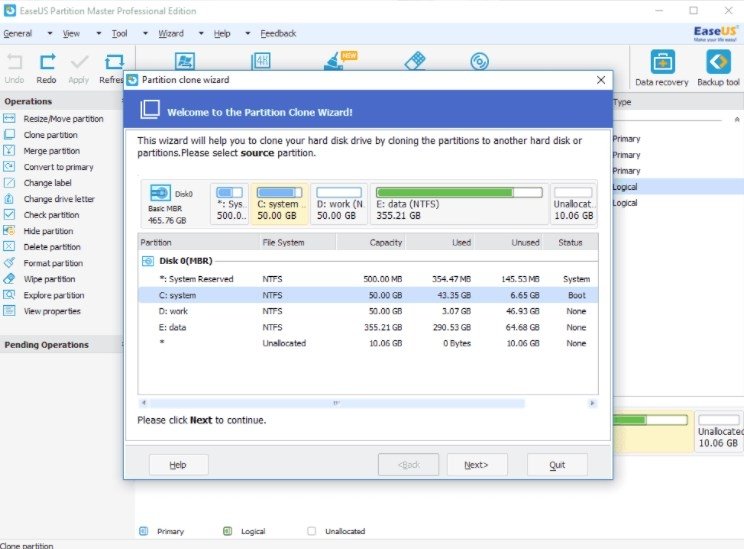
Disk Utility can find and repair errors related to the formatting and directory structure of a Mac disk. Errors can lead to unexpected behavior when using your Mac, and significant errors might even prevent your Mac from starting up completely.
Answer 1: Mac has default tools to repair disk, partition and file system errors automatically, such as First Aid in Disk Utility and more. When the process finished the exit code, it means everything goes on well with the Mac. But if you are notified with “The volume could not be verified completely. File system check exit code is 8. Click the partition on which your operating system is installed - in this case it's called Mac OS X - and, under the First Aid tab, click Repair Disk Permissions. Mac Disk Utility; Disk First Aid Mac; Disk Repair For Mac Osx; Disk Repair For Mac Os 10.13; macOS Recovery is part of the built-in recovery system of your Mac.
Before proceeding, make sure that you have a current backup of your Mac, in case you need to recover damaged files or Disk Utility finds errors that it can't repair.
This site contains user submitted content, comments and opinions and is for informational purposes only. Apple may provide or recommend responses as a possible solution based on the information provided; every potential issue may involve several factors not detailed in the conversations captured in an electronic forum and Apple can therefore provide no guarantee as to the. Disk First Aid 8.6.1, despite having been originally released for Mac OS 9.0.4, can still run on Mac OS 8.1 on a 68040. It is the last version to run on a 68k Mac. Later versions of Disk First Aid that shipped with Mac OS 9.x were exclusive to PowerPC. Disk First Aid 8.6.1, despite having been originally released for Mac OS 9.0.4, can still run on Mac OS 8.1 on a 68040. It is the last version to run on a 68k Mac. Later versions of Disk First Aid that shipped with Mac OS 9.x were exclusive to PowerPC.
Open Disk Utility
In general, you can just open Disk Utility from the Utilities folder of your Applications folder. However, if your Mac doesn't start up all the way, or you want to repair the disk your Mac starts up from, open Disk Utility from macOS Recovery:
- Determine whether you're using a Mac with Apple silicon, then follow the appropriate steps:
- Apple silicon: Turn on your Mac and continue to press and hold the power button until you see the startup options window. Click the gear icon labeled Options, then click Continue.
- Intel processor: Turn on your Mac, then immediately press and hold these two keys until you see an Apple logo or other image: Command (⌘) and R.
- You may be asked to select a user you know the password for. Select the user, then click Next and enter their administrator password.
- From the utilities window in macOS Recovery, select Disk Utility and click Continue.
Macbook Pro Disk Utility Startup
Select your disk in Disk Utility
Mac Os Boot Disk Download
Choose View > Show All Devices (if available) from the menu bar or toolbar in Disk Utility.
The sidebar in Disk Utility should now show each available disk or other storage device, beginning with your startup disk. And beneath each disk you should see any containers and volumes on that disk. Don't see your disk?
In this example, the startup disk (APPLE HDD) has one container and two volumes (Macintosh HD, Macintosh HD - Data). Your disk might not have a container, and it might have a different number of volumes.
Repair volumes, then containers, then disks
For each disk that you're repairing, start by selecting the last volume on that disk, then click the First Aid button or tab. Citrix workspace download 1912.
In this example, the last volume on the disk is Macintosh HD - Data.
Click Run to begin checking the selected volume for errors.
- If there is no Run button, click the Repair Disk button instead.
- If the button is dimmed and you can't click it, skip this step for the disk, container, or volume you selected.
- If you're asked for a password to unlock the disk, enter your administrator password.
Gta san andreas pc dowload. After Disk Utility is done checking the volume, select the next item above it in the sidebar, then run First Aid again. Keep moving up the list, running First Aid for each volume on the disk, then each container on the disk, then finally the disk itself.
In this example, the repair order is Macintosh HD - Data, then Macintosh HD, then Container disk3, then APPLE HDD.
If Disk Utility found errors that it can't repair
If Disk Utility found errors that it could not repair, use Disk Utility to erase (format) your disk.
If your disk doesn't appear in Disk Utility
If Disk Utility can't see your disk, it also can't see any containers or volumes on that disk. In that case, follow these steps: Youtube mp4 converter mac free.
Disk First Aid Mac Download Crack
- Shut down your Mac, then unplug all nonessential devices from your Mac.
- If you're repairing an external drive, make sure that it's connected directly to your Mac using a cable that you know is good. Then turn the drive off and back on.
- If your disk still doesn't appear in Disk Utility, your Mac might need service. If you need help, please contact Apple Support.